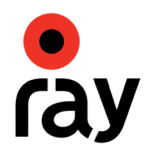Technology
Our tech stack uses Wi-Fi signals, digital signal processing and machine learning algorithms to track respiration rate.
The tech behind Wi-Fi to track respiration is based on the principle of wireless sensing. Wi-Fi signals propagate through the environment and interact with objects within their range. When we respire, our chest contracts and expands, causing subtle movements that affect the propagation of Wi-Fi signals.
Our chest movements cause minute Doppler shifts (change in wave frequency when the source or observer is in motion) in the W-iFi signals reflected off our body. Deploying Wi-Fi enabled smart devices equipped with Wi-Fi transceivers in the vicinity of the person allows us to capture these subtle variations in Wi-Fi signals.
Our patent-pending algorithms and software analyze these changes in Wifi signals to detect and measure breathing patterns.
This technique, known as Advanced Signal Processing techniques, including machine learning algorithms, is employed to analyze the received signals and extract oxygenation information.
Tech Advantages
No physical sensors need to be attached to the body removing discomfort or inconvenience to users
Non-invasive monitoring
Enabled by Wi-Fi sensors that take away the need for a wearable device or specialized equipment, a feature especially useful in healthcare, eldercare and smarthomes.
Remote monitoring
Continuous monitoring
Made possible by the use of Wi-Fi signals, allowing for uninterrupted monitoring over extended periods to provide insights into respiratory health and patterns
Because Wi-Fi signals can penetrate walls and obstruction while offering accuracy, reliability and scalability. As more improvements in Wi-Fi sensing capabilities develop, our technology has the potential to become more accessible and widespread.
Privacy ensured

Integrate AL with your device
Integrated into a smart television, AL can prompt the viewer to take a break, wake them up if they fall asleep in front of the TV, and even save power by turning off the TV. In case of a fall or a health emergency while watching TV - especially among seniors - AL can alert caretakers.
Integrated with temperature monitoring for workplaces like factories and malls, AL can closely monitor people for health emergencies or symptoms of viral infections.
Integrated with smart home devices, AL can predict health events for residents, detect abnormal sleeping patterns, breathing rates and drops in body temperature and prompt automated changes to lighting and room temperature. AL can track breathing for pre-existing conditions like asthma and cardiovascular diseases, detect falls, accidents or other health events and request emergency care. If the resident falls asleep, AL can turn the lights off and lock the house.
Integrated into smart vehicles, AL can track a driver’s breathing to measure fatigue and drowsiness and raise an alert if the driver falls asleep behind the wheel or has a health emergency.
With AL, your smart home becomes more intuitive. A smart AC can regulate the temperature to make your sleep comfortable. A smart bulb can regulate the lights when AL detects if a person is sleepy or asleep. A smart speaker can detect if there are people in the room. The possibilities are plenty.
Integrated into fitness and sleep trackers, smart scales and activity monitors, AL can greatly improve efficiency with breathing quality during exercise, monitoring sleep cycles unobtrusively, and tracking exercise and physical activity to help the user achieve their desired goals.
Integrated into a central console, AL can aggregate device data for family members or caretakers in other living units (such as nursing homes or senior housing)
Case study
How do you determine hydration levels of a user using respiration rate, heart rate and BIA sensor data available in a smart watch?
Smartwatches have gained popularity for their ability to monitor various physiological parameters. Of these, hydration status assumes importance as dehydration can lead to impaired cognitive function and an increased risk of heat-related illnesses. Monitoring hydration levels in real-time using wearable technology could be the solution.
We developed a smartwatch-based system capable of accurately tracking hydration levels using respiration rate and BIA sensor data. Further, we explored the integration of heart rate and blood pressure measurements to enhance the accuracy of hydration monitoring.
Collect respiration rate (possible increase during dehydration as body attempts to compensate for decreased blood volume and oxygen delivery)
Collect Heart Rate and Blood Pressure (possibly elevated when dehydrated)
Collect BIA sensor date (lower than normal Total Body Water and lower Hydration Index suggest dehydration)
Pattern Recognition of dehydration across multiple parameters to arrive at a diagnosis of dehydration
Clinical Context for other symptoms such as thirst, dry mucous membranes, reduced urine output, and changes in mental status.
Baseline Comparison: Compare current measurements to the individual's baseline or normal values, if available for significant deviations.
Longitudinal Monitoring: Monitor changes in hydration status over time using repeated measurements. This can help assess the effectiveness of hydration interventions and guide treatment
References-
"Clinical assessment of dehydration in older people admitted to hospital: what are the strongest indicators?" (Thomas DR et al., 2009)
"A clinical sign to identify patients with inadequate hydration status in the emergency department" (Vincent JL et al., 2018)
"Respiratory Rate: The Neglected Vital Sign" (Grant S. Lipman, 2015)
"Hydration status and the return of spontaneous circulation following cardiac arrest: a retrospective study" (Nishikawa T et al., 2019)
"Association between dehydration and short-term risk of ischemic stroke in patients with atrial fibrillation" (Toyoda K et al., 2018)



















